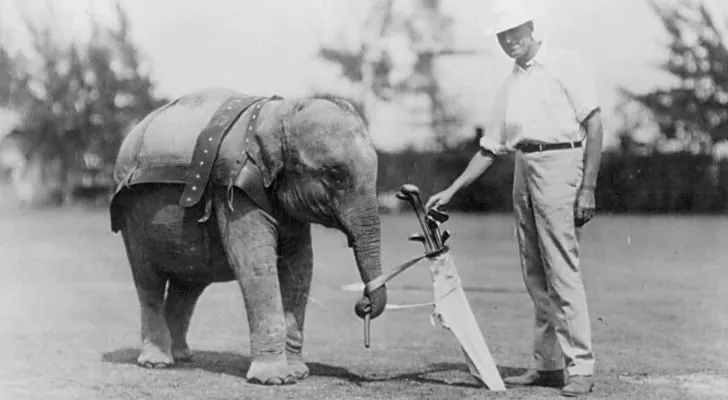Have you ever wondered why golf courses have 18 holes? You might have also wondered why it’s 18 and not 16 or 20, but this standard has a long history.
Despite urban legends suggesting that the 18 holes represent the number of shots to finish a fifth of Scotch, the true origins of the standard are more practical.
So, we did some digging to reveal the ultimate answer! Let’s delve into the history of golf and explore the reasons why the game has 18 holes.
Was golf always played with 18 holes?

In the 15th century, Scottish gentlemen began playing a game similar to modern golf in St. Andrews on Scotland’s east coast.
Initially, golf was not regulated, and games at St. Andrews Links had 11 holes played twice, totaling 22 holes.
Golf was also played in other parts of eastern Scotland, with each course having a different number of holes. For instance, Musselburgh Links, one of Scotland’s oldest surviving golf courses, had only seven holes until the 19th century.
It was not until 1764 that St. Andrews Links was reduced to 9 holes, played twice, establishing the concept of an 18-hole game of golf.
Today, many golfers dream of teeing off on the famous Old Course at St. Andrews. Imagine the thrill of playing a round on this historic course!
How did they decide on how many holes to play, though?

St. Andrews Links, often referred to as the “Home of Golf” for a reason, lies on a thin stretch of land along Scotland’s east coast. This topography really limited where would-be golfers could realistically play.
These limitations were why there were eleven holes – there simply wasn’t enough room for more than that. And even then, that number was reduced because they apparently tried to squeeze too many in.
And that is essentially how all of Scotland’s golf courses developed initially, with each building the number of holes that worked according to the landscape.
So why 18 holes, then?

Well, basically, because of St. Andrews. At the time that golf was becoming popular in Scotland, the British Empire was at its height.
British people from all over the United Kingdom wanted to play golf wherever they went.
This meant that as the empire expanded, so did the popularity of golf.
Many of the world’s golf courses needed to follow a standard set of rules, so they followed in the footsteps of Scotland’s leading course.
When did golf courses with 18 holes become the standard?

Members of the Royal and Ancient St. Andrews Golf Club began to play at other clubs across the world.
Wherever they went, they influenced the rules – they were the ones who came up with them, after all. The change didn’t happen overnight, though.
In 1857 St. Andrews settled upon 18 holes – that’s almost a hundred years after they first tried the concept – and it took a further eighty years for the rest of the world to play this number as the default.
It was only in 1950 that this number was cemented in the official rules of golf.
As it turns out, the reason a standard game of golf is played with 18 holes has nothing to do with whisky.
Instead, it really just boils down to geography, and how much land people had available to play golf on!
So, the next time you tee off on the course, you can impress your fellow golfers with the knowledge of why there are 18 holes in golf, and the rich history behind it. Happy golfing!


















